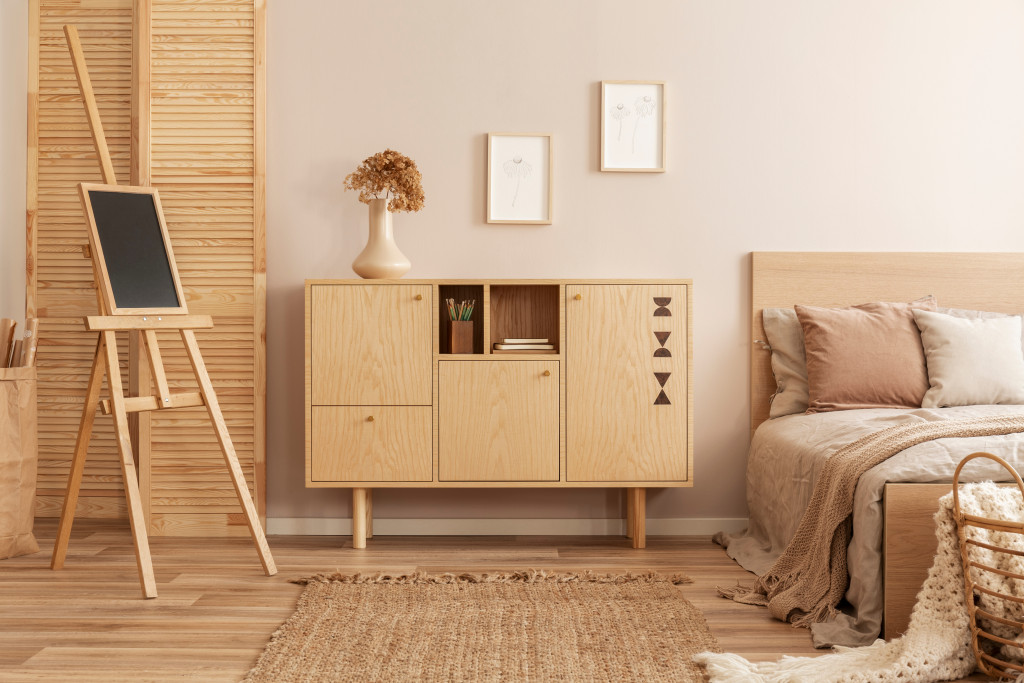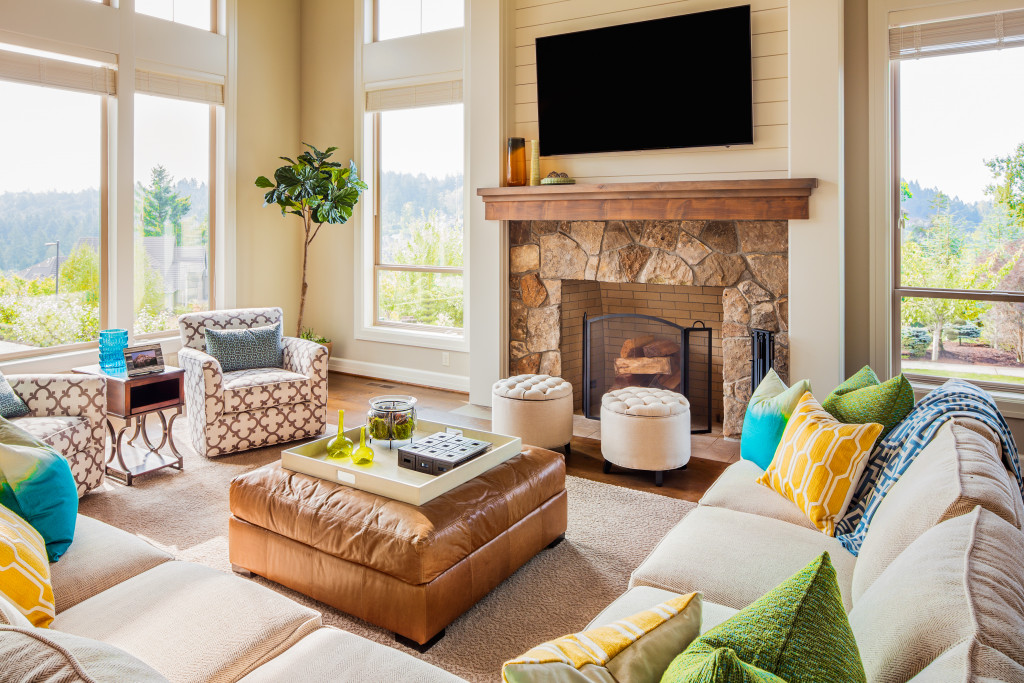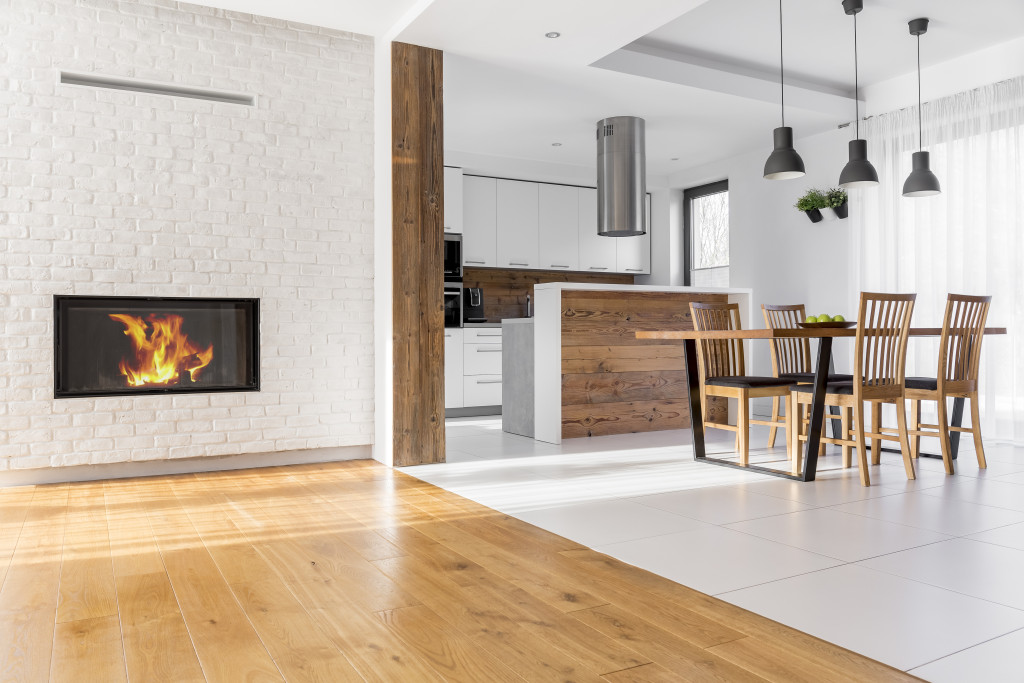- Elevating your living space can improve your well-being and comfort.
- Create a captivating mood and ambiance by emphasizing color harmony.
- Incorporate functional and aesthetic storage to keep a clutter-free environment.
- Emphasize the importance of natural light by making strategic design choices.
- Connect with nature by integrating plants and natural materials into your home.
Your living space is more than just a place to reside; it reflects your personality, tastes, and aspirations. Elevating its design can enhance its aesthetic appeal and improve your overall well-being and comfort. If you’re seeking ways to transform your home into a sanctuary that resonates with your style, here are five expert tips to help you achieve that dream.
1. Focus on Color Harmony
The colors you choose for your living space are significant in setting the mood and ambiance.
Opt for a cohesive color palette that aligns with the atmosphere you wish to create. Neutral tones can provide a serene and spacious feel, making rooms appear larger and more inviting.
However, consider incorporating bold accent colors through decor items or feature walls to add energy and vivacity. Remember, the key is balance. Too many contrasting colors make space chaotic, while a monotone palette can seem dull. Find a middle ground that reflects your style.
2. Incorporate Functional and Aesthetic Storage

A clutter-free environment contributes significantly to a calm and composed living space.
Consider furniture that serves dual purposes — like ottomans with storage compartments or beds with built-in drawers. Floating shelves and wall-mounted cabinets can help keep your floor space open while providing storage.
Furthermore, aesthetically pleasing storage units, such as stylish bookshelves or chic cabinets, can serve as decor elements in their own right. By merging functionality with design, you ensure that every piece in your home adds value to your living experience.
3. Prioritize Natural Light
Natural light can drastically transform the feel of any space, making it brighter, more spacious, and uplifting. Remember, a well-lit room looks more inviting and can positively influence your mood and well-being.
Here are some tips on how to use natural light:
Utilizing Windows and Skylights
Windows and skylights should be prioritized when utilizing natural light in a space. The orientation of a window plays a crucial role in the amount of sunlight that can enter a room.
East-facing windows are ideal for morning light, while west-facing windows provide ample sunlight in the afternoon. South-facing windows can provide consistent natural light throughout the day, while north-facing windows tend to let in less sunlight.
Consider installing larger windows or adding skylights when designing or renovating a space. This will bring in more natural light and add an aesthetic appeal to the room. If possible, avoid placing furniture or tall objects in front of windows to ensure maximum sunlight can enter the room.
Using Light Colors and Reflective Surfaces
Lighter colors reflect natural light, making a space appear brighter and more spacious. When choosing paint colors for walls and furniture, opt for lighter shades such as white, pastels, or neutral tones. The same principle applies to flooring choices; lighter-colored floors will help amplify the available natural light.
Additionally, using reflective surfaces such as mirrors or metallic accents can enhance a room’s brightness by bouncing light around.
Incorporating Outdoor Elements
Bringing elements of nature into your space can help create a seamless connection with the outdoors while maximizing natural light. Indoor plants add greenery and freshness to a room and filter the air, creating a healthier environment. Natural materials such as wood or stone can add warmth and texture to a space.
Designing for Different Lighting Needs
Different room areas may require different lighting levels depending on their intended use. For example, a reading nook may benefit from direct sunlight, while a dining area may need soft ambient light for a cozy atmosphere.
Consider using layered lighting, including overhead lights, task lighting, and accent lighting. This will allow for flexibility in lighting adjustments based on different activities or moods.
4. Invest in Quality Over Quantity

It’s tempting to fill every corner regarding home decor and furnishings. However, less is often more.
Instead of purchasing numerous items, invest in fewer, high-quality pieces that stand the test of time and make a statement. Whether it’s a luxurious leather couch, an artisanal coffee table, or a handwoven rug, these pieces can serve as focal points around which the rest of your decor revolves. By prioritizing quality, you ensure longevity and timeless appeal, making your living space chic.
5. Revitalize Your Outdoor Space
Your living space is not confined to the interiors; the outdoor area is an extension of your home and deserves equal attention.
Firstly, consider the flooring. Whether it’s wooden decking, stone pathways, or tiled patios, ensure it’s in sync with the overall theme of your home. Next, think about greenery. A well-maintained lawn, flower beds, or even potted plants can make a difference.
You could also add garden fencing so that you have privacy while enjoying the outdoors. If you’re looking for professional assistance to achieve that dream fencing, companies like Absolute Gardens are your go-to. These professionals will help you design and install fencing that complements your home’s aesthetic and provides privacy.
Lastly, incorporate outdoor furniture and lighting to create a cozy and inviting atmosphere. With a well-designed outdoor space, you can extend your living area and enjoy the beauty of nature right at your doorstep.
Final Words
Elevating your living space is a journey of self-expression and discovery. You create an elegant and deeply personal environment by harmonizing colors, decluttering, embracing natural light, investing in quality, and seeking a connection with nature. Remember, every choice should resonate with your tastes and lifestyle. After all, your home should be a haven where you feel most ‘you,’ offering comfort and inspiration.

